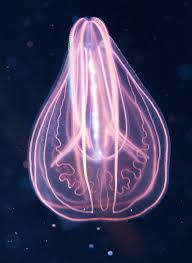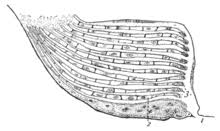NEET PREVIOUS YEAR QUESTION ANIMAL KINGDOM
- Bilaterally symmetrical and acoelomate animals are exemplified by [NEET 2020]
(1) Platyhelminthes (2) Aschelminthes
(3) Annelida (4) Ctenophor
2. Match the following columns and select the correct option [NEET 2020]
Column-I Column-II
(a) Gregarious, polyphagous pest (i) Asterias
(b) Adult with radial symmetry and larva (ii) Scorpion
with bilateral symmetry
(c) Book lungs (iii) Ctenoplana
(d) Bioluminescence (iv) Locusta
(a) (b) (c) (d)
(1) (iv) (i) (ii) (iii)
(2) (iii) (ii) (i) (iv)
(3) (ii) (i) (iii) (iv)
(4) (i) (iii) (ii) (iv)
3. Which one of the following belongs to the family Muscidae? [NEET 2021]
(1) House fly (2) Fire fly
(3) Grasshopper (4) Cockroach
4. Match the following
List-I List-II
(a) Physatia (i) Pearl oyster
(b) Limutus (II) Portuguese Man of war
(c) Ancylostome (iii) Living fossil
(d) pinctada (iv) Hookworm
Choose the correct answer from the option given below [NEET 2021]
(1) a(i), b(iv), c(iii), d(ii) (2) a(ii), b(iii), c(i), d(iv)
(3) a(iv), b(i), c(iii), d(ii) (4) a(ii), b(iii), c(iv), d(i)
5. Read the following statements
(a) Metagenesis is observed in Helminths.
(b) Echinoderms are triploblastic and coelomate animals.
(c) Round worms have organ-system level of body organisation.
(d) Comb plates present in ctenophores help in digestion.
(e) Water vascular system is characteristic of Echinoderms.
Choose the correct answer from options given below. [NEET 2021]
(1) (b), (c) and (e) are correct
(2) (c), (d) and (e) are correct
(3) (a), (b) and (c) are correct
(4) (a), (d) and (e) are correct.
6. Match List-I with List -II
List-I List-II
(a) Metamerism (i) Coelenterate
(b) Canal system (ii) Ctenophora
(c) Comb plates (iii) Annelida
(d) Cnidoblasts (iv) Porifera
Choose the correct answer from the options given below:-[NEET 2021]
(1) a(iv), b(i), c(ii), d(iii) (2) a(iv), b(iii), c(i) d(ii)
(3) a(iii), b(iv), c(i) d(ii) (4) a(iii), b(iv), c(ii), d(i)
7. Match the following genera with their respective phylum:- [NEET 2019]
(a) Ophiura (i) Mollusca
(b) Physalia (ii) Platyhelminthes
(c) Pinctada (iii) Echinopdermata
(d) Plansria (iv) Coelenterata.
Select the correct option:-
(1) a(iii), b(iv), c(ii), d(i)
(2) a(iv), b(i), c(iii), d(ii),
(3) a(iii), b(iv), c(i), d(ii),
(4) a(i), b(iii), c(iv), d(ii)
8. Match the following group of organisms with their respective distinctive characteristics and the correct option. [NEET 2020]
Organisms Characteristics
(a) Platyhelminthes (i) Cylindrical bpdy with no segmentation
(b) Echinoderms (ii) Warm blooded animals with direct development.
(c) Hemichordates (iii) Bilateral symmetry with incomplete digestive system
(d) Aves (iv) Radial symmetry with indirect development
(1) a(i), b(ii), c(iii), d(iv)
(2) a(iii), b(iv), c(i), d(ii)
(3) a(ii), b(iii), c(iv), d(i)
(4) a(iv), b(i), c(ii), d(iii)
9. Consider following features
(a) Organ system level of organisation .
(b) Bilateral symmetry.
(c) True coelomates with segmentation of body
Select the correct option of animal groups which possess all the above characteristic. [NEET 2019]
(1) Annelida, Arthropoda and Chordata.
(2) Annelida, Arthropoda and Mollusca
(3) Arthropoda, Mollusca and Chordata.
10. Which of the following animals are true coelemates with bilateral symmetry?
(1) Annelids
(2) Adult Echinoderms
(3) Aschelminthes
(4) Platyhelminthes
11. Which of the following options does correctly represent the characteristic features of phylum Annelida? [NEET 2020]
(1) Diploblastic, mostly marine and radially symmetrical.
(2) Triploblastic, unsegmented body and bilaterally symmetrical.
(3) Triploblastic,segmented body and bilaterally symmetrical.
(4) Triploblastic,flattened body and acoelomate condition.
12. Which of the following features is not present in the phylum-Arthropoda?
(1) Jointed appendages (2) Chitinous exoskeleton
(4) Parapodia.
13. Match Column-I with Column-II for housefly classification and select the correct using the codes given below. [NEET 2016]
Column-I Column-II
(a) Family (i) Diptera
(b) Order (ii) Arthropoda.
(c) Class (iii) Muscidae
(d) Phylum (iv) Insecta
Codes :-
(a) (b) (c) (d)
(1) (iii) (i) (iv) (ii)
(2) (iii) (ii) (iv) (i)
(3) (iv) (iii) (ii) (i)
(4) (iv) (ii) (i) (ii)
14. Match the following organisms with their respective characteristics:-
(a) Pila (i) Flame cells
(b) Bombyx (ii) Comb plates
(c) Pleurobrachia (iii) Radula
(d) Taenia (iv) Malpighian tubules
Select the correct option from the following:- {NEET 2017}
(1) a(iii), b(ii) c(i), d(iv) (2) a(iii), b(iv), c(ii), d(i)
(3) a(ii), b(iv), c(iii) d(i) (4) a(iii), b(ii) c(iv) d(i)
15. Which of the following animals does not undergo metamorphosis? [NEET 2018]
(1) Earthworm (2)Tunicate
(3) Starfish (4) Moth
16. In case of poriferans the spongocoel is lined with flagellated cells called [NEET 2017]
(1) Ostia (2) Oscula
(3) Choanocytes (40 Mesenchymal cells
17. An important characteristic that Hemichordates share with Chordates is [NEET 2017]
(1) Absence of notochord
((2) Ventral tubular nerve cord
(3) Phyarynx with gill slits
(4) Phyarynx without gill slits
18. Which group of animals belong to the same phylum? [NEET 2013]
(1) Eartworm, Pinworm, Tapeworm
(2) Prawn, Scorpion, locusta
(3) Sponge, Sea anemone, Starfish
(4) Malarial parsite, Amoeba, Mosquito
19. Which of the following are correctly matched with respect to their taxonomic classification? [NEET 2013]
(1) Flying fish, cuttlefish, silverfish – Pisces
(2) Centipede, millipede, spider, scorpion – Insecta
(3) House fly, butterfly, tsetsefly, silverfish -Insecta
(4) Spiny anteater, sea urchin, sea cucumber -Echinodermata
20. One of the representatives of phylum Arthropoda is [NEET 2013]
(1) Silverfish (2) Pufferfish
(3) Flying fish (4) Cuttlefish
21. Which of the following statements are true for the phylum-Chordata? [NEET 2021]
(1) In Urochordata notochord extends from head to tail and it is present throughout their life.
(2) In vertebrata notochord is present during the embryonic period only.
(3) Central nervous system is dorsal and hollow.
(4) Chordata is divided into 3 subphyla: Hemichordata, Tunicata and Cephalochordata.
(1) (c) and (a) (2) (a) and (b)
(3) (b) and (c) (4) (d) and (c)
22. All vertebrates are chordates but all chordates are not vertebrates, why? [NEET 2020]
(1) All chordates possess notochord throughout their life.
(2) Notochord is replaced by vertebral column in adult of some chordates.
(3) Ventral hollow nerve cord remains throughout life in some chordates.
(4) All chordates possess vertebral column.
23. Match the following columns and select the correct option. [NEET 2020]
Column-I Column-II
(a) 6-15 pairs of gill slits (i) Trygon
(b) Heterocercal caudal fin (ii) Cyclostomes
(c) Air Bladder (iii) Chondrichthyes.
(d) Poison (iv) Osteichthyes.
(a) (b) (c) (d)
(1) (iii) (iv) (i) (ii)
(2) (iv) (ii) (iii) (i)
(3) (i) (iv) (iii) (ii)
(4) (ii) (iii) (iv) (i)
24. Which one of the following organisms bears hollow and pneumatic long bones?[NEET 2020]
(1) Omithorhynchus (2) Neophron
(3) Hemidactylus (4) Macropus
25. Identify the vertebrate group of animals characteristic by crop and gizzard in its digestive system.
[NEEt 2018]
(1) Amphibia (2) Reptilia
(3) Osteichthyes (4) Aves
26. Match the following columns and select the correct option:- [NEET 2020]
Column-I Column-II
(a) Aptenodytes (i) Flying fox
(b) Pteropus (ii) Angel fish
(c) Pterophyllum (iii) Lamprey
(d) Petromyzon (iv) Penguin
(1) a(ii), b(i) c(iv), d(iii) (2) a(iii), b(iv), c(ii), d(i)
(3) a(iii), b(iv), c(i) d(ii) (4) a(iv), b(i) c(ii) d(iii)
27. Which one of these animals is not a homeotherm? [NEET 2018]
(1) Macropus (2) Chelone
(3) Psittacula (4) Camelus
28. Which one of the following characteristics is not shared by birds and mammals? [NEET 2016]
(1) Warm blooded nature
(2) Ossified endoskeleton
(3) Breathing using lungs
(4) Viviparity
29. Which among these is the correct combination of aquatic mammals? [NEET 2017]
(1) Seals, Dolphins, Sharks
(2) Dolphins, Seals, Trygon
(3) Whales, Dolphins, Seals
(4) Trygon,Whales, Seals
30. Choose the correct statements [NEET 2016]
(1) All mammals are viviparous
(2) All cyclostomes do not possess jaws and paired fin.
(3) All reptiles have a three-chambered heart
(4) All pisces have gills covered by an operculum
31. Which of the following represents order of ‘Horse’? [NEET 2017]
(1) Equidae (2) Perissodactyla
(3) Caballus (4) Ferus
32. Which of the following characteristic features always holds True for the corresponding group of animals?
[NEET 2016]
(1) 3-chambered heart with one incompletely divided ventricle – Reptilia
(2) Cartilaginous endoskeleton – Chondrichthyes
(3) Viviparous – Mammalia
(4) Possess a mouth with a upper and a lower jaw – Chordata
33. Which of the following animals is not viviparous?
(1) Whale (2) Flying fox (Bat)
(3) Elephant (4) Platypus
34. A marine cartiilaginous fish that can produce electric current is
(1) Pristis (2) Torpedo
(3) Trygon (4) Scoliodon
35. Besides annelida and arthropoda, the metamerism is exhibited by
(1) Mollusca (2) Acanthocephala
(3) Cestoda (4) Chordata
36. Which of the following is common among mammals?
(1) They undergo no moulting
(2) They have seven cervical vertebrae
(3) They are carnivores
(4) They have ventral nerve cord
37. Pneumatic bones are found in
(1) Shark (2) Rana
(3) Pigeon (4) Whale
38. Which of the following fish was introduced in India by foreigners?
(1) Mystus (2) Clarius
(3) Labeo (4) Pomphret
39. The long bones are hollow and connected by air passages. These are the characteristic of
(1) Reptilia (2) Land vertebrates
(3) Aves (4) Mammals
40. Fish, Which eradicates the mosquito larva is
(1) Gambusia (2) Cuttle fish
(3) Anabas (4) Rohu
ANSWER
1. (1) 2. (1) 3.(1) 4. (4) 5. (1) 6. (4) 7. (3) 8. (2) 9. (1) 10. (1)
11. (3) 12. (4) 13. (1) 14. (2) 15. (1) 16. (3) 17. (3) 18. (2) 19. (3) 20. (1)
21. (3) 22. (2) 23. (4) 24. (2) 25. (4) 26. (4) 27. (2) 28. (4) 29. (3) 30. (2)
31. (2) 32. (2) 33. (4) 34. (2) 35. (4) 36. (2) 37. (3) 38. (4) 39. (3) 40. (1)
QUOTE:- ” SUCCESS IS THE SUM OF SMALL EFFORTS, REPEATED.”


